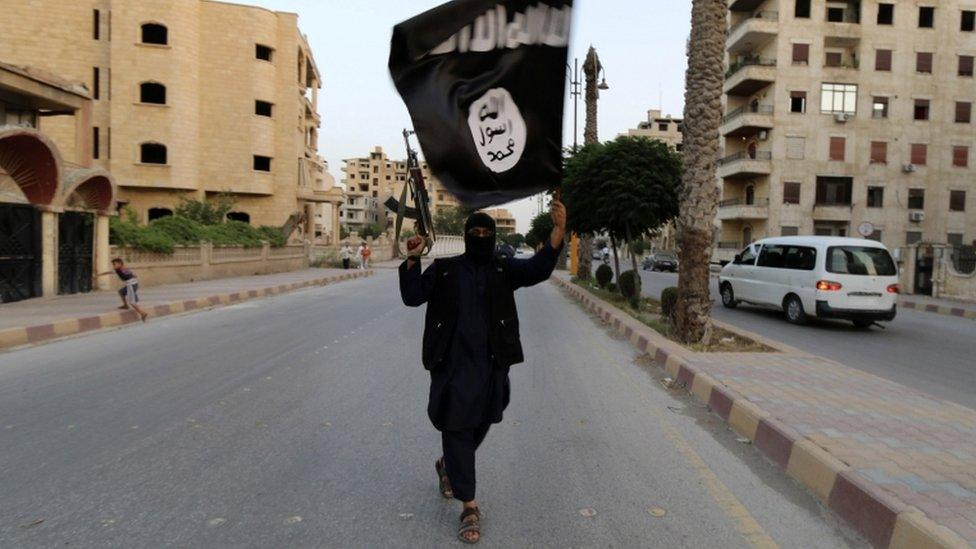IS tried to build pulse jet-powered drones - report
- Published
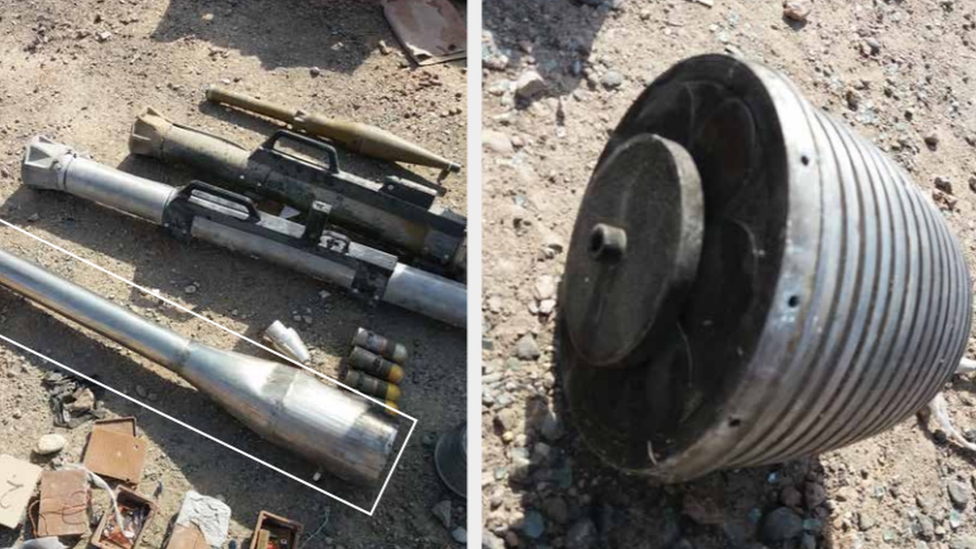
The pulse jet engine (pictured here, with air intake unit at right) was found at a hospital in Mosul, Iraq in September 2017
The Islamic State (IS) group attempted to develop high-speed drones powered by pulse jet engines like those used in V-1 bombs dropped on the UK during World War Two, an investigation has found.
A conflict monitor revealed the engine in a new report about how IS obtained and made weapons under its "caliphate".
Conflict Armament Research (CAR) said IS had "sophisticated production capabilities for improvised weapons".
IS was declared territorially defeated in Syria and Iraq in March 2019.
From 2014, IS had imposed its brutal rule on millions of people, once controlling 88,000 sq km (34,000 sq miles) of territory stretching from western Syria to eastern Iraq.
After five years of fierce battles, local forces backed by the US and its allies managed to wrest back all the territory controlled by IS.
"No other non-state armed group has matched the scale and ambition of IS weapons production," Mike Lewis, CAR's head of enhanced investigations, said.
Namir Shabibi, the organisation's head of operations in Iraq, said "remaining cells in Iraq and Syria have become increasingly active in the past year".
"Preventing their procurement efforts by spotting the kinds of red flags detailed in this report remains important for countering the group's resurgence."
What were the report's main findings?
CAR's report, released on Tuesday, external, was the product of an 18-month investigation into the procurement networks behind IS weapons production.
The report said production became "increasingly technically advanced and quasi-industrialised" between 2014 and 2017, the height of IS's so-called caliphate.
The report said key materials used by IS forces in Iraq and Syria to produce weapons and explosives predominantly came from a small number of huge bulk purchases made by family-run businesses in Europe and Turkey.
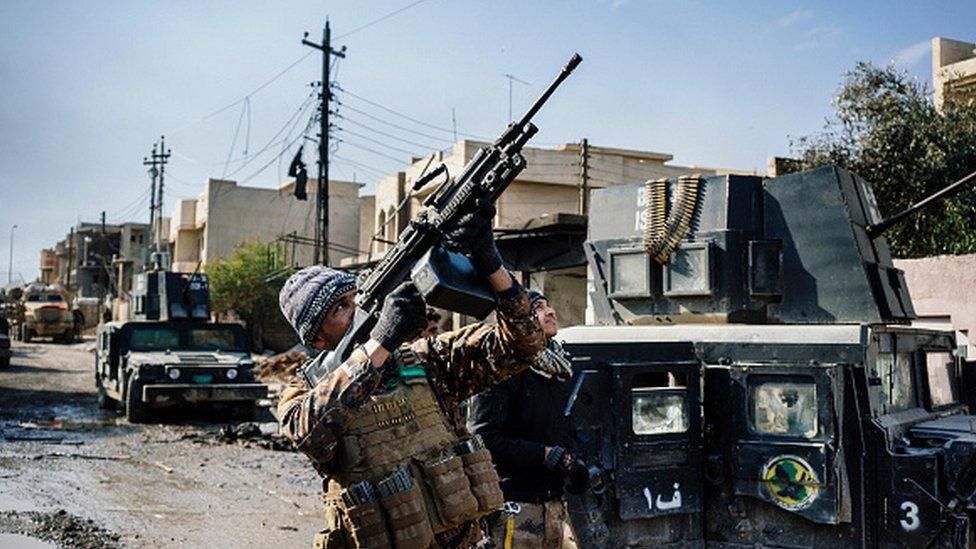
The report found that IS had the resources and capacity to produce "sophisticated" weapons
Bulk purchases made in 2014 and 2015 continued to fuel IS weapon production until its territorial loss in 2019, the report said.
"A small number of key individuals and businesses were central to the procurement of diverse goods ranging from surveillance equipment to fertiliser for producing explosives," Mr Lewis said.
"With stronger due diligence, much of this trade might have been disrupted."
The report said IS's used of drones focused heavily on small, electrically powered aircraft, which are commercially available worldwide.
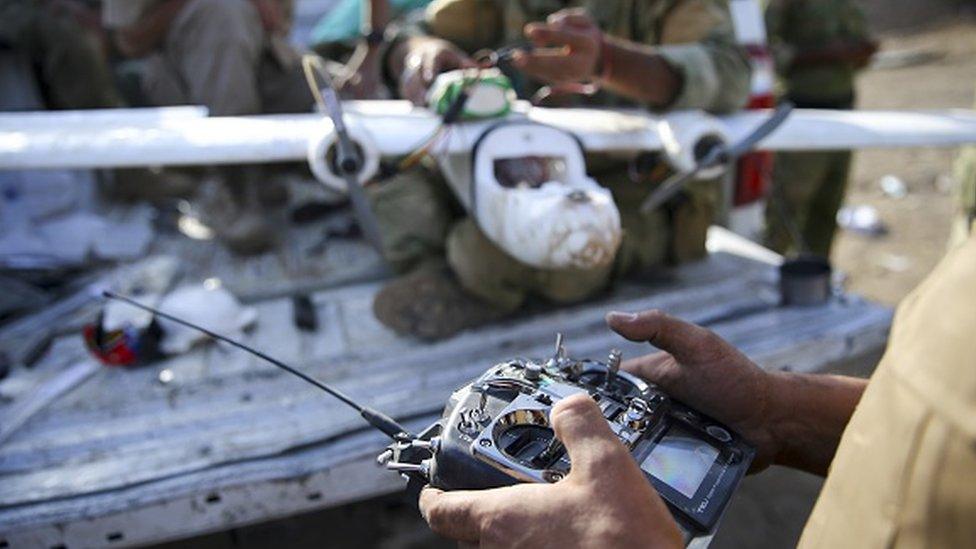
IS militants used unmanned aerial vehicles (UAVs) for strikes in Syria and Iraq
But the investigation found that, from 2015 onwards, IS technicians "also sought to develop larger, faster unmanned aerial vehicle (UAVs) powered by pulse jet engines".
The report said a "fully constructed pulse jet engine" measuring more than two metres in length was found at a hospital in west Mosul, Iraq in September 2017.
"Pulse jets are a type of acoustic jet engine originally developed for World War II-era V-1 'flying bomb' cruise missiles," the report said.
V-1 missiles were used by the Nazi German military during World War Two. Pulse jet engines "fell out of use for full-scale aircraft in the 1950s", but remain "inexpensive", the report said.
Investigators said an automated anti-aircraft system was another of the "ambitious new weapons systems" IS made and tested but didn't use.

More on IS:
Matthew is now enjoying life in the US with his father, Juan
Related topics
- Published23 March 2019
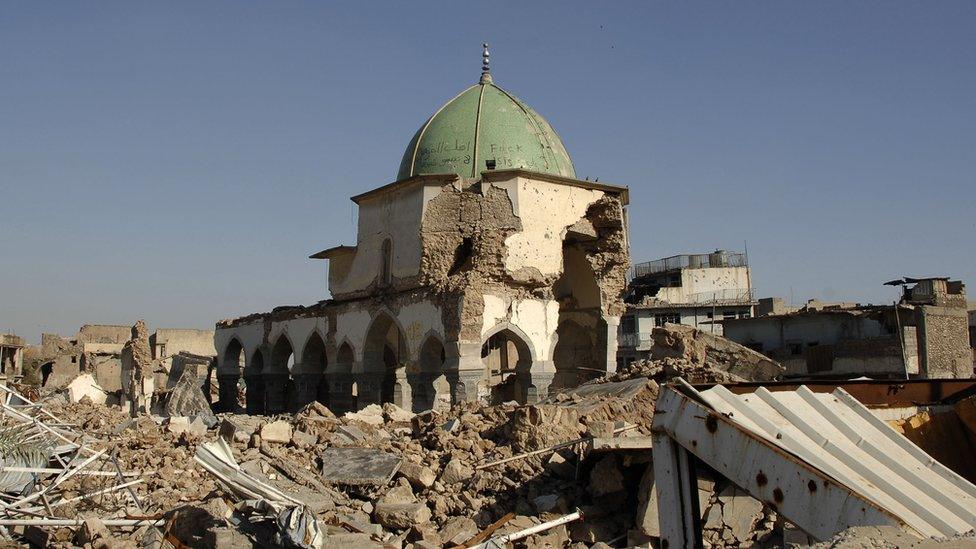
- Published1 September 2020

- Published14 August 2020
